
+256-782-930-341

Office Hours:
Monday - Saturday

Construction site visit
- Post published: 11/03/2022
- Post category: Real Estate Development
- Post comments: 0 Comments
- Post last modified: 11/03/2022
- Reading time: 5 mins read
Construction site visits are an important part of the construction process. The purpose of the site visit is to take a look at the site, assess any potential problems, and provide feedback on the work that has been done.

The following are some reasons for conducting a construction site visit:
– To assess any potential problems with the work already completed
– To provide feedback on work done so far
– To determine if there are any unforeseen obstacles or issues that need to be addressed
A site visit is a visit to a construction site. Site visits are usually conducted by clients, architects, and other stakeholders before the project is complete.
Site visits can be done in person or virtually using 3D models or video.
Site visits are often used to review construction progress, identify potential risks and hazards, and confirm that the work is being done according to the design specifications.
In order for a site visit to be successful, it is important that all parties involved have an understanding of what they will be looking for during their visit and what information they will need from each other.
The following questions should be discussed before a site visit:
-What are the objectives of the site visit? -What inspection methods might we use onsite? -How will we
Site visits are a great way to learn more about the construction process.
You may have heard that site visits are a great way to learn more about the construction process. But what is it like to visit a construction site?
A site visit is an opportunity for you to see how your home or business will be built. You’ll get a chance to see how work is progressing and ask questions. It’s also an opportunity for you to meet with your builder and architect, who can answer any questions you might have about the project and its progress.
The best part of visiting a construction site is that it gives you an idea of what it will be like when your home or business is finished and it’s ready for occupancy.
A site visit is a meeting or inspection of a building site by an engineer, architect, or other consultant. The purpose of the site visit is to verify that the construction is progressing according to plan and to assess any risks, including potential hazards and safety issues.
A site visit usually involves:
– Assessing the progress of construction work against the design drawings
– Verifying compliance with building codes
– Identifying risks and making recommendations for remedial action
– Conducting inspections for safety purposes http://8-must-dos-in-scheduling-construction-site-visits/
Site visits are a great way to get first-hand insights on how the project is progressing.
It is traditionally assumed that site visits involve going to sites and examining them for defects, workmanship, materials and equipment, and that if the conditions are not satisfactory, requiring corrective action by the site managers. This can be for one reason or another.
Site managers who receive inspection visits must be prepared to schedule them accordingly with appropriate supervision, unless they are scheduled out of consultation with sufficient lead time from senior management.
Site visits are a very important part of construction. The way a site visit is carried out depends on what type of building is being built or constructed.
Site visits are typically carried out to survey the construction progress, to make sure all the required materials needed for the process are in order, and most importantly to make sure that everything is being done as planned.
If there were no site visits, it would be difficult for contractors and clients to know if any obstacles had arisen, or if mistakes were made by either party during construction. Site visits also help detect functionality issues and design error. Furthermore, a lot of times site staff lawyers will not allow prospective tenants or buyers who desire to visit the building enter on their own before inspection has been made by either one of the parties (property owner).
A construction site visit is classified as “an inspection of a construction project carried out with a view to establishing facts such as the progress of works, materials on site, and equipment’s as well as identifying hazards or problems in order to decide what might be done better or differently
Construction site visit to happen at least once per shift
1 out of 5 construction workers report that their site visits don’t happen often enough
One major challenge with a construction site visit is that it identifies hazards and risks but does not provide viable solutions. The root cause may have caused from lack of maintenance or improper installation.
A thorough investigation must always be performed before safety remedies are put in place and workers subjected to any danger. https://gotinoconstruction.com/construction-site/
You Might Also Like

paint white brick house

Get the Most for Your Home Improvement Dollars with the Right Company!

Insulating a Concrete Floor
Leave a reply cancel reply.
Save my name, email, and website in this browser for the next time I comment.
Useful Links
Corporate locations.
Plot number 481 and Block number:98, Nsambwe, Mukono
Lira Branch:
Odokomit behind Totco-Ober Road
+256-782-930-341 or +256-700-395-162
Privacy Overview
- Contact sales
Start free trial
Construction Site Management: A Guide to Site Inspection and Site Planning

There’s much to plan in construction. While the building gets the attention, there are equally important functions happening outside of the final product. For example, the construction site. This is where all the work takes place, and that work can be dangerous. The building site requires site inspection, construction site safety and more.
Let’s take a closer look at this often-neglected side of construction project management . We’ll define what a construction site is, what is meant by construction site planning and inspection and explore the variety of construction sites and roles you’ll find when working in construction. Construction sites might not get the glory, but no construction project would be done without them.
What Is a Construction Site?
First, let’s define a construction site; it’s a piece of land on which a building or some other structure will be erected. It’s often referred to as a building site, but a construction site is typically more expensive. Construction sites are suitable for any type of construction.
But a construction site requires more than just setting up work on a plot. There are soil and vegetation that need to be addressed to make the site suitable. It’s only after this landscaping is complete and handed to the contractor to start work that it becomes officially a construction site.
There can be major or minor site changes depending on the condition of the plot. However, all construction sites must comply with the local building regulations that govern when and how work can be done.
ProjectManager is robust project management software with multiple tools and features for planning, scheduling and tracking construction projects and construction sites. You can use tools such as Gantt charts, kanban boards, real-time dashboards and timesheets to create construction schedules, assign work to your team members, monitor resource utilization, track costs and much more. Get started for free today.
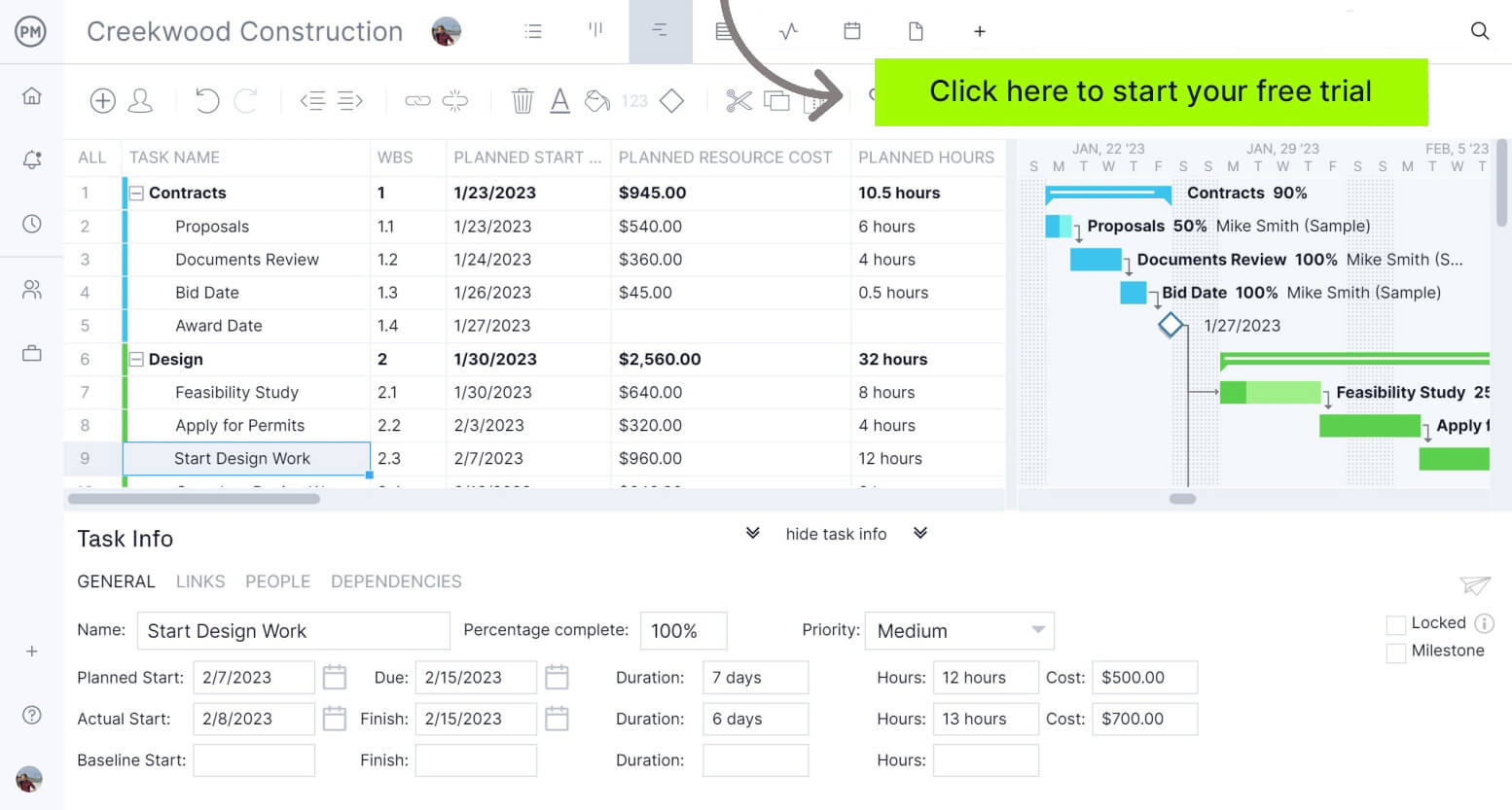
Types of Construction Sites
We mentioned two types of construction sites, commercial and residential . There are also industrial and infrastructure ones. Of course, there are other ways to define a construction site, such as by sector, owner, occupancy, etc. But there are four main types of construction sites that we’ll define.
- Residential construction sites: This is a construction that serves as a home for people, whether it’s single or multi-family homes, such as apartment buildings or row houses.
- Commercial construction sites: The commercial construction site is a place to erect structures related to business including offices, warehouses, etc.
- Industrial construction sites: Like commercial, industrial construction sites are places of business, but they’re factories and large-scale facilities that need more than office space. They manufacture products and include heavy machinery.
- Infrastructure construction sites: The last of our four main construction site types is infrastructure, which can be anything from roads and bridges to airports.
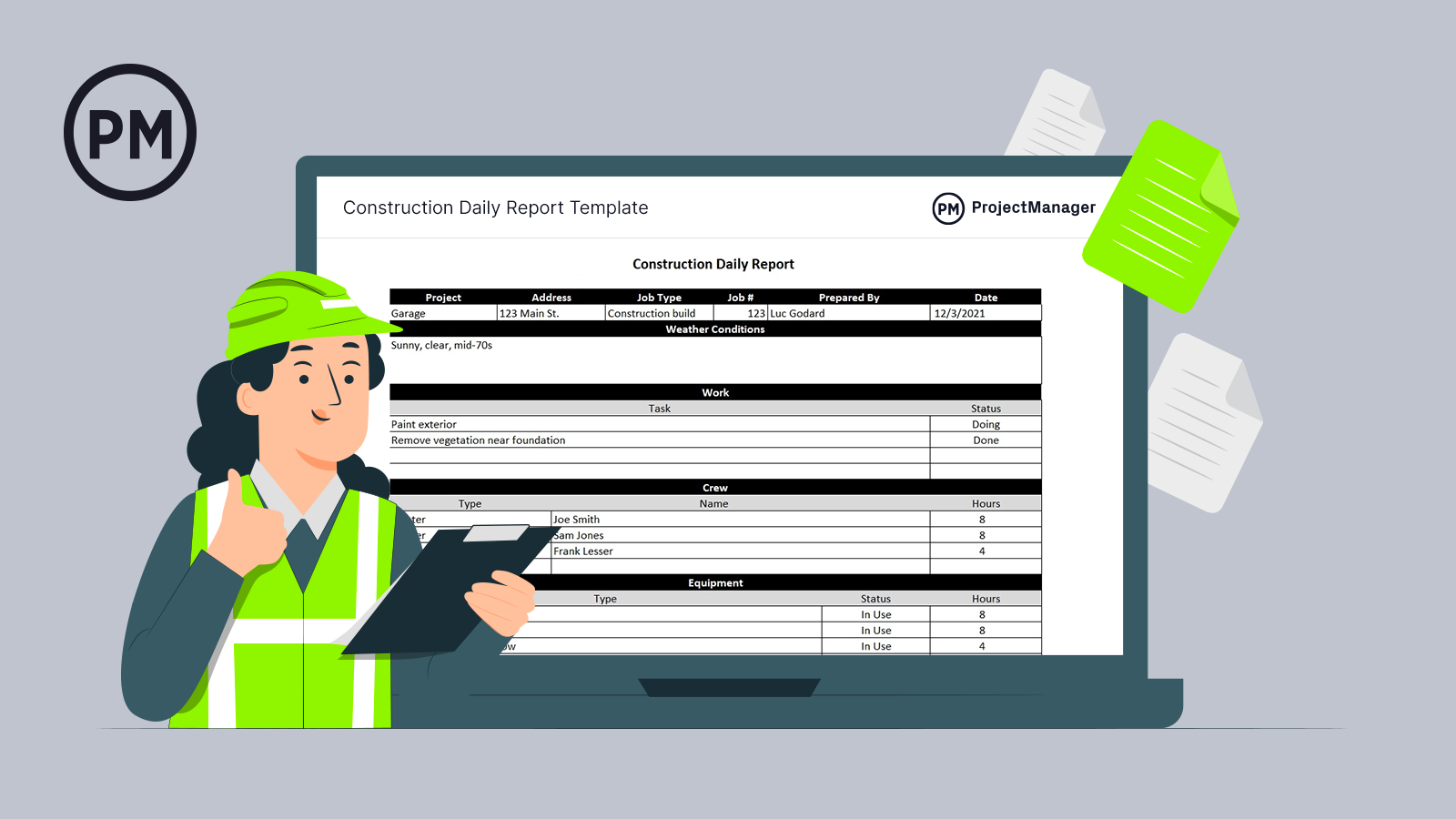
Get your free
Construction Daily Report Template
Use this free Construction Daily Report Template for Excel to manage your projects better.
What Is Construction Site Management?
The term construction site management refers to the process of analyzing the unique conditions of a construction site, preparing it, managing the daily activities of the construction crew and ensuring there are sufficient resources such as labor, materials and equipment when they’re needed.
There are lots of different construction site management activities, which can be divided into key areas such as:
- Construction site analysis
- Construction site planning
- Construction site inspection
- Construction site monitoring
- Construction site safety management
What Is Construction Site Planning?
A professional who’s either a licensed engineer, architect or land surveyor executes site planning. The site plan also includes site analysis and planning to expand from the structures being erected to include transportation and other areas that’ll be affected by the build.
Sitting planning, especially site analysis, is the first step toward creating a construction project plan. You can’t build until you know what you’re building on and how to modify it to support the planned structure. Project management software helps you take this data and organize it.
ProjectManager is award-winning software that offers project management features for construction. For example, its Gantt chart view helps you create construction schedules, allocate resources, track costs and find the critical path of your project. You can also set a project baseline to compare your planned effort against your actual effort to keep to your construction plan and deliver on time and within budget.
In addition to Gantt charts, you can also use multiple construction project management tools such as kanban boards, project dashboards, reports and more. Get started with this free construction schedule template.
What Is a Construction Site Inspection?
A construction site inspection ensures the work being done complies with the plans and construction specifications of the project, but also the requirements of the client and code regulations. This isn’t a one-time event, but the job site is checked regularly throughout project execution.
There are more reasons for the construction site inspection, such as ensuring the quality of the work and the safety of its execution in terms of both the process and the finished product. This is part of the monitoring and reporting phase in construction and involves clear communication with stakeholders who have a vested interest in keeping the project expectations progressing as planned.
Construction Site Inspection Checklist
Construction site inspections cover a lot of ground, all of it critical to the success of the project. Here are some focus areas in a typical construction site inspection and why they’re so important to project success.
Daily Progress
A progress inspection is part of the daily responsibility on the job site to ensure that it complies with project requirements . These can be done by one or more project members depending on the size of the job. These individuals can also be from different trades as long as they’re experts in what they’re inspecting. If needed, experts can be brought in for inspections on outside issues, such as waste management or environmental policy.
Construction Site Safety Hazards
A construction site safety hazards inspection looks for on-site hazards, whether they’re a danger to the construction crew or to the integrity of what’s being built on the site. Not only are these hazards identified, but there are recommendations made to fix them, provide some kind of protection or mitigate the issue.
Regulatory Compliance
A regulatory inspection is part of the safety, performance and quality inspection for a job site. A safety inspector or regulatory inspector looks at the project’s operation and activities to ensure that the laws, regulations and rules are being followed.
Quality Control
This inspection is about overseeing the processes and procedures related to managing control on the construction site and making sure that the project and materials used are all meeting the standards set during the project planning phase. This is done to ensure that the expectations of all parties involved are being met.
Environmental Factors
An environmental factors inspection surveys and samples soil and existing structures on the construction site to measure asbestos and other environmental impacts. This includes groundwater sampling and phase I and phase II site assessments, which are done by qualified environmental professionals.
Draw Inspections
Of all the inspections listed for the construction site, the draw inspection is the simplest. It takes place in both commercial and residential construction projects and involves the builder and the lender. The draw inspection ensures the lender knows that the project is progressing as planned.

What Is Construction Site Monitoring?
Construction site monitoring is the process of tracking the activities that take place on the construction site and resolving issues that might occur to keep projects on track.
For example, one key activity of construction site monitoring is to manage project risks. Construction site managers must identify any potential risks that might bring the construction site to a halt such as machine breakdown, material shortages, lack of financial resources, accidents and even criminal acts such as theft.
Construction site monitoring also involves tracking other aspects of your project, such as reporting on the construction team’s daily activities to make sure they’re completing the tasks outlined in the construction schedule on time. Other examples include monitoring resource utilization to make sure your team isn’t exceeding the project budget or establishing a maintenance schedule for keeping construction site equipment in optimal condition.
Construction Site Safety Management
One unique characteristic of a construction site is that there will always be a variety of construction site hazards that might affect the safety of construction workers. This always needs to be accounted for when planning a construction project .
Construction site safety planning starts by identifying any project safety hazards and then establishing guidelines, rules and procedures to mitigate their potential impact. Then you should follow up with periodic construction site inspections to make sure site safety measures are implemented effectively.
Construction site safety management is an ongoing effort. It’s important to allocate financial resources for the procurement of protective equipment or implement any site safety measures during the construction execution phase.
Construction Site Management Documents
The construction site management process involves creating a variety of documents and reports that can help you plan, inspect, and monitor your construction site. Here are some of the most important construction site management documents .
Construction Site Plan
A site plan, also called a plot plan, is a drawing made by the architect, urban planner or engineer that illustrates the existing and proposed conditions for the construction site. These conditions can include buildings, roads, sidewalks, parking, drainage, sewer and water lines, lighting and landscaping.
A site plan is a drawing that illustrates the arrangement of whatever structures are to be built on the site, such as buildings, parking, drives and landscaping. The contractor uses several construction drawings to guide their work. But these drawings are also submitted to the local building authority to ensure they’re meeting the codes in the jurisdiction. Copies of the drawings are kept for historical records.
This is an important document that’s known by different names including site development plan, site layout plan, site plan drawing or plot plan. However, there’s a slight difference between site plans and plot plans. A plot plan shows the layout of a construction site only, while the site plan also includes its surroundings.
Site Inspection Report
A construction site inspection report is a document that’s created after a site inspection takes place and allows site inspectors to log all the different issues and observations they might have about a construction site.
This report should cover various aspects of a construction site such as site safety measures, compliance with building codes and other government regulations, condition of the equipment and machinery and quality of materials, among other things.
Daily Construction Report
A daily construction report is a document that allows the construction project management team to keep track of the construction site. A construction daily report allows you to log all the project tasks that are executed in a day, track the work hours of the construction crew, document resource utilization and other important details to keep track of the events.
We have created a free daily construction report template that can help you monitor the activities that take place in your construction site.
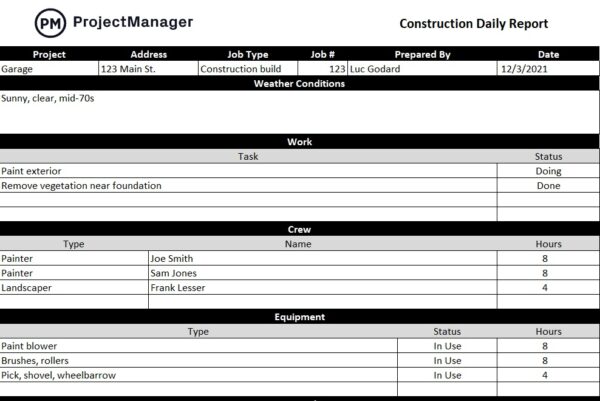
What Is a Construction Site Office?
A construction site office is a physical place within a construction site where management activities and meetings take place and documentation is stored. Besides the construction management team and site documents, one of the most important elements of a construction site office is construction project management software.
Construction site offices use construction project management software like ProjectManager to schedule the daily activities, balance the workload of construction crews, monitor resource utilization and track costs.
The roles and responsibilities of a construction site office might vary from one construction firm to another, but usually, there should be a construction site manager, a construction site supervisor and a construction site engineer. Let’s review these key construction site management roles.
Construction Site Roles
The construction site requires a vast number of construction workers to build the proposed structure. We’ve broken down the construction site roles involved in construction project management into four main disciplines.
Construction Site Manager
The construction site manager is usually the head of the construction site office. This role is responsible for allocating resources, controlling costs and other aspects of the construction site operations to help ensure construction projects are completed on time and within budget. They work with architects, surveyors and builders to keep the construction project on track and ensure that there are resources available when needed.
Construction Site Supervisor
While site managers are responsible for the bigger picture of a construction site, site supervisors have a lower degree of authority and focus on the everyday activities. Some responsibilities of a site supervisor may include creating daily construction reports, managing site documentation, balancing the workload of the construction crew or tracking the work hours and performance of construction workers.
Construction Site Engineer
The construction site engineer offers technical advice as well as planning, marking out and leveling the construction site. This is done before any building takes place. They can also build roads, drainage systems and other related things. Their responsibilities are similar to that of a construction site manager as they both manage the project, supervise staff and offer onsite support.
Construction Site Inspector
The construction site inspector is responsible for reviewing the work on the construction site to make sure it passes all inspections, such as safety, code, etc. They not only check but record the results and manage that archive, which includes the time of the inspection and the materials reviewed.
Construction Workers
This leaves the construction workers, also called construction laborers or the construction crew. They execute the onsite tasks from removing debris to building scaffolding, loading and unloading building materials and operating heavy equipment.
ProjectManager Helps You Manage Your Construction Site
Managing a construction site involves a lot of work and coordination. ProjectManager is award-winning construction project management software that helps you plan, manage and track that work in real time.
There are a lot of different types of workers on a construction site and our software allows them to use whichever tool best suits their work. Construction site managers often prefer Gantt charts to plan, schedule and monitor work, while construction workers find kanban boards and task lists more beneficial. All of our project views update in real time so no matter which tool you choose, you’re working on the most current data.
Manage Construction Bids With Kanban Boards
ProjectManager’s kanban boards allow construction firms, project owners, general contractors and subcontractors to manage their construction bids with one tool. Create kanban board columns to group your construction bids by their status such as sent, in review and approved or rejected. This allows you to track your construction bids, communicate with your team online and attach files with unlimited file storage.
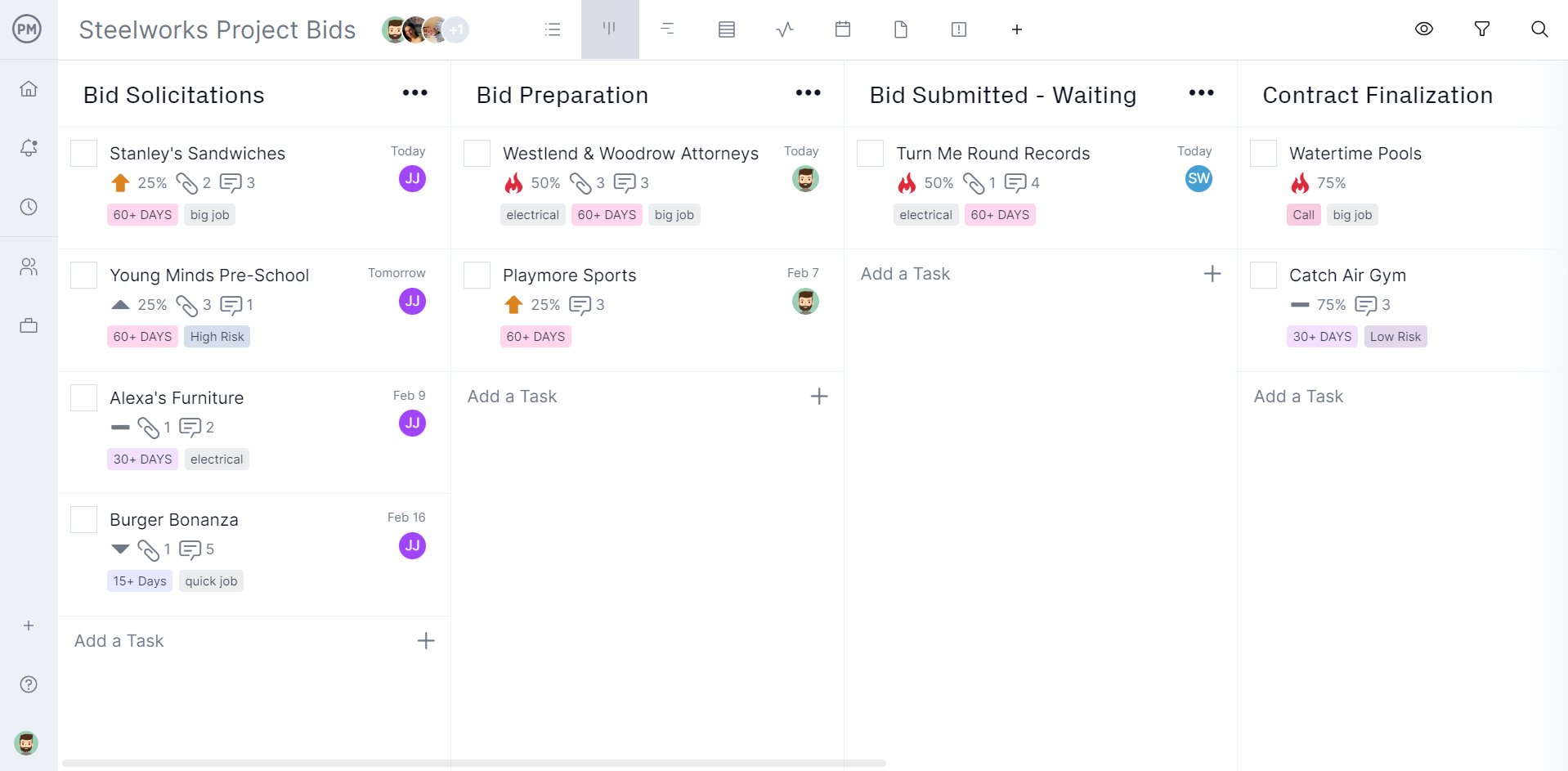
Get a High-Level View With Real-Time Dashboards
Construction site managers need to track progress, quality and more. Our real-time dashboard gives them a high-level view of the project whether they’re onsite, in the office or anywhere. It automatically collects project data and displays it in easy-to-read graphs and charts that show metrics such as time, cost, workload and more. Unlike lightweight tools, there’s no time-consuming configuration required. All you have to do is toggle over to the dashboard and it’s already calculated and displayed.
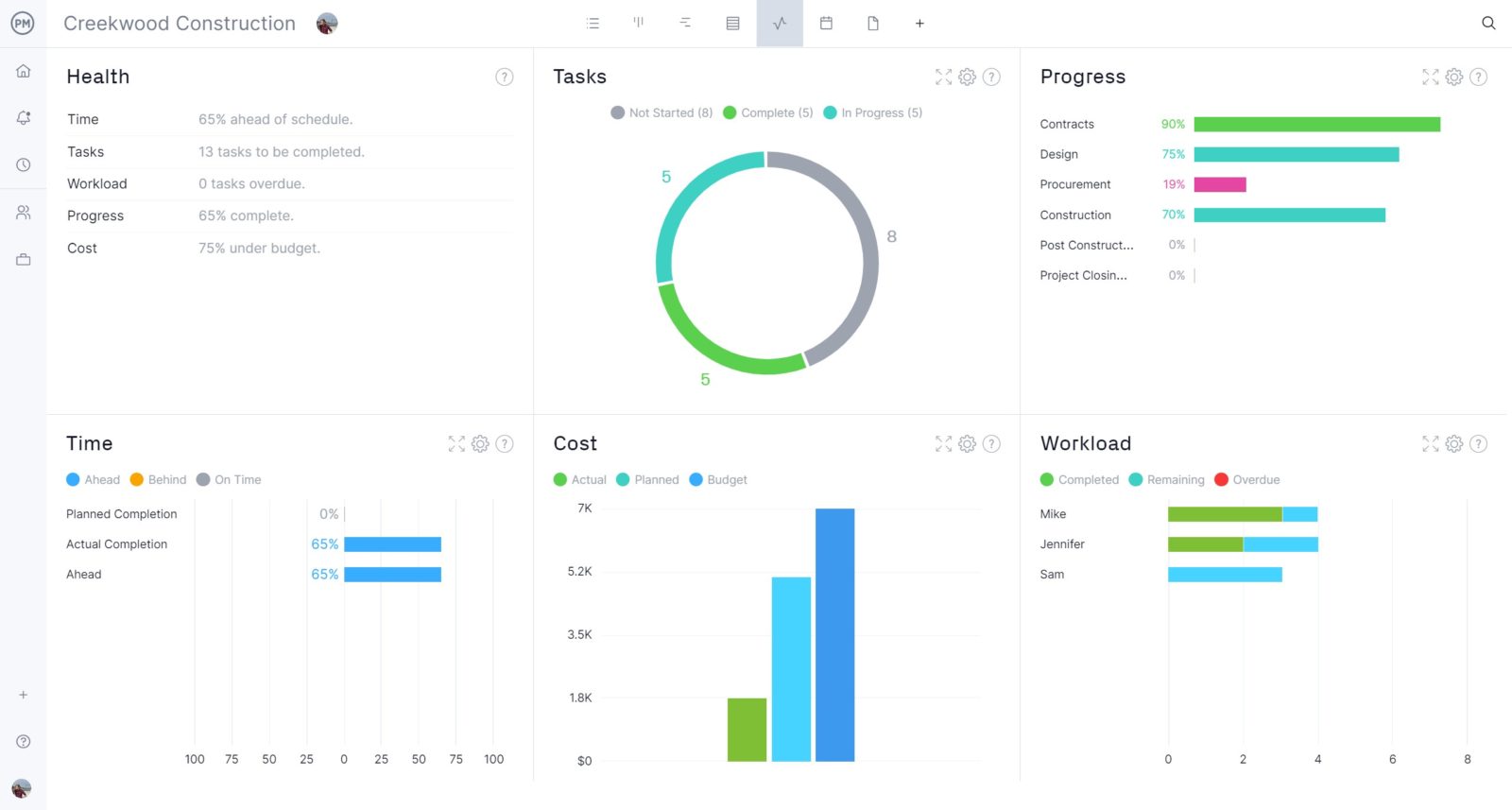
Log Hours Anywhere With Secure Timesheets
The last thing construction workers want to do after a day laboring on the construction site is rush back to the office to log their hours. Our mobile app makes filing timesheets easy no matter where you are. Once submitted, the timesheet is locked and delivered to a supervisor who reviews and submits them. Timesheets are also a great tool to track the percentage of crew members’ work that has been completed. You can view how much of their tasks are done and get a better idea if you’re on schedule.
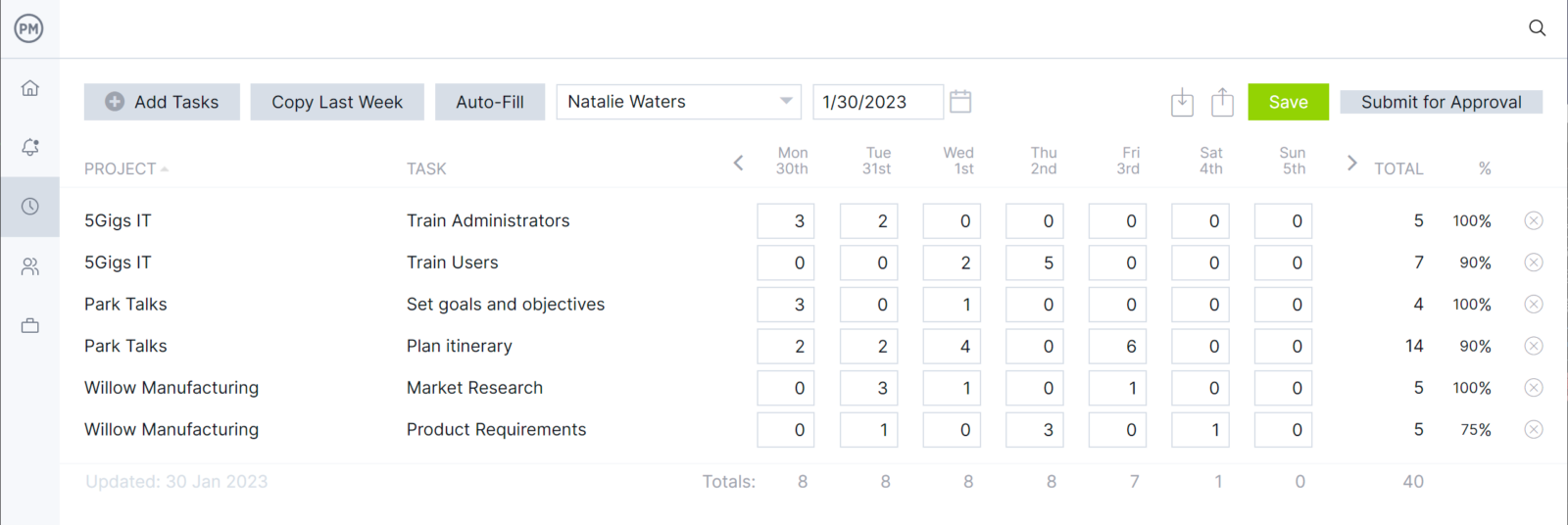
ProjectManager is online construction project management software that empowers teams to plan, manage and track their work in real time. Our collaborative platform means that you’re connected anywhere and at any time to share files, comments and more. Get started with ProjectManager today for free.

Deliver your projects on time and on budget
Start planning your projects.
- Canada (English)
- Canada (Français)
- United States (English)
- Europe & Middle East
- Deutschland (Deutsch)
- France (Français)
- United Arab Emirates (English)
- Asia Pacific
- Australia (English)
- Singapore (English)
Construction Site Inspections: A Guide for Contractors & Owners
Last Updated Jan 29, 2024
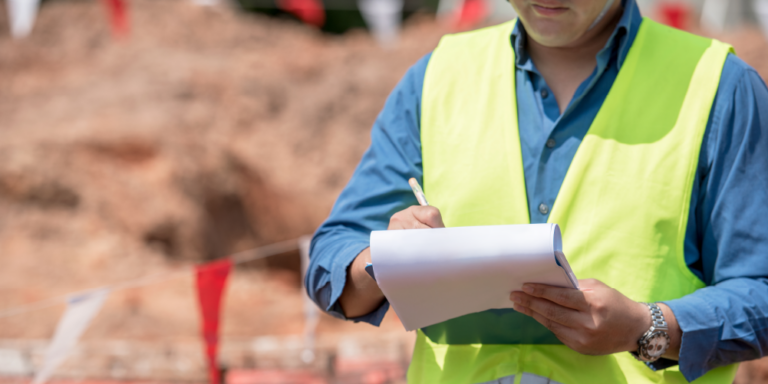
Construction site inspections are critical to ensuring that quality and safety procedures are followed correctly from the start. Construction projects involve coordinating multiple project team members, materials and equipment, which may expose contractors to many potential risks and hazards. In order to successfully run a construction site through the entire lifecycle of the project, routine construction site inspections are necessary.
Table of contents
Types of Inspections
Progress inspections.
A construction site inspection checklist is essential in the planning phase of a construction project as it ascertains compliance with project requirements. Once the project has broken ground, progress inspections become part of the job site’s daily routine to guarantee these requirements are met.
Depending on the project size, progress inspections are conducted by one or more individuals across several trades. If a specific aspect of the project requires additional input, specialist inspectors may be brought in to perform inspections on things like the environmental policy, waste management plan and accessibility.
Quality Inspections
Quality control inspections ensure the finished construction work meets the quality standards set in place. Quality inspections also make sure that the project complies with all the specifications and quality requirements listed in the contract documents. Quality inspections include regular site walkthroughs, and they typically result in a monthly quality report that identifies issues and monitors progress.
Building Regulation Compliance Inspections
By carrying out building regulation inspections, builders ensure that performed work is going to be approved by the local authority’s building control department or by an approved inspector. Depending on the details of the project, these building regulation inspections vary in number and frequency.
These inspections most often occur during:
- Excavation, (before excavations are filled)
- Foundations (before they are covered up)
- Laying of damp proof courses
- Installation of new drains (before covering up)
- Construction of the primary structure
- Installation of insulation
- Roof construction
Inspection Timing
Construction site inspections occur throughout a project, though the types of inspections and responsible agencies often differ.
Preconstruction
While most construction site inspections are conducted during the construction phase, they can begin in preconstruction. Preconstruction inspections survey the property condition and neighbouring areas before construction begins. Preconstruction site inspection checklists may consist of checks on planning permissions, conditions and obligations to ensure compliance with local authorities.
During The Project
As the term suggests, construction site inspections most often occur on the construction site. The project scope, budget and programme are the primary measures of quality during a construction project.
Project Close Out
The final inspection and construction close out process consists of site walkthroughs verifying everything has been completed in accordance with the contract documents. Once confirmed, the building is ready for its intended use or occupancy. This means the snag list has been completed, and submittals, lien waivers, warranties, close out documentation, manuals and as-builts have been turned over to the owner and verified for completeness.
Site Inspection Checklist
This simple checklist covers many items commonly inspected, especially as the project approaches close out.
- Inspections of work progress compliance with plan and specifications
- Inspections of work quality and compliance standards and specifications
- Inspections of paints and coatings
- Field testing and materials sampling of soils, concrete and asphalt, etc.
- Review and completion of variation/s
- Inspections of materials delivered and used
- Performing semi-final and final inspections upon building completion
- Preparation of snag list/s and monitoring of completion works
- Handover inspection for smooth project close out
Learn how Procore enables contractors and owners to build inspection templates that are customisable to suit their specific project needs: See Project Inspections on Procore Support .
Inspection Software
Construction site inspection software can help improve your construction site inspection processes. Digital construction site safety inspection forms facilitate documentation, tracking and collaboration. With a construction site inspection app, your teams can build out, manage and maintain your company-wide inspection library. Standardisation also allows you to baseline your current processes, identify problems and improve your overall quality and safety programme .
Risk is part of every construction project. Construction site inspections help mitigate some of that risk by providing a process that allows teams to deal with human error and unforeseen changes that occur throughout the project. Having a refined checklist for construction site inspections will help drive successful completion of the project and provide visibility into areas for improvement -- enabling teams to stay ahead of safety issues and leave risk behind.
Categories:
14 articles
Explore more helpful resources

.css-c249p1::before{width:100%;height:100%;display:block;position:absolute;top:0px;left:0px;z-index:0;content:'';cursor:inherit;} A Construction Expert’s Guide to BIM
Over the last ten years, construction companies have made great strides in using technology to make construction more efficient and innovative. One form of technology that has unlocked new abilities...
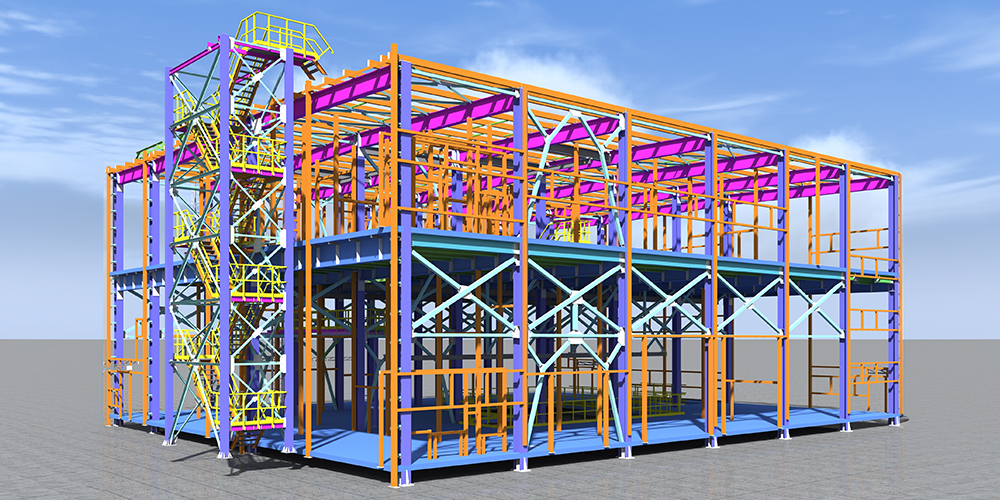
A Guide to ISO 19650 for Construction Professionals
ISO 19650 is an international standard for managing building information models (BIM), digital drawings, and other construction data. It offers guidelines for organising and digitising information throughout the lifecycle of...

What is a Construction Management Plan?
A construction management plan (CMP) is a key document construction companies and their clients use to outline and guide how they will manage a construction project. It is often a...
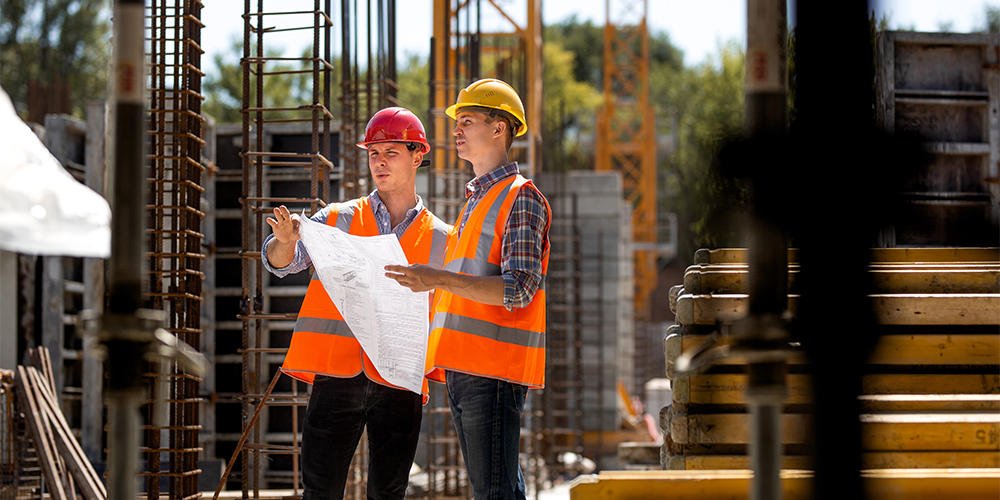
A Construction Expert’s Guide to the Bill of Quantities
What is a Bill of Quantities? A Bill of Quantities (BoQ) is a precise list of all the necessary materials and labour for a building project. It’s like a shopping...
- Request free trial
- Product Permit Management Incident Management Audit Management
- Why Safetymint
- Support Resources Help Docs
- About About Us Partners Careers Blog
- Request a Demo
Construction Site Inspection Checklist
Ensure safety, compliance, and efficiency on your construction site with our comprehensive Construction Site Inspection Checklist. This free PDF template covers all critical aspects of construction site safety, equipment maintenance, and adherence to regulations, empowering you to identify potential hazards, address issues promptly, and create a secure working environment for all personnel.

Digitize this Checklist on Safetymint
- Create unlimited, customized checklists
- Add Actions, with automated reminders
- Works seamlessly with or without internet
- Access via web browsers, mobile or tablets
Take a free trial
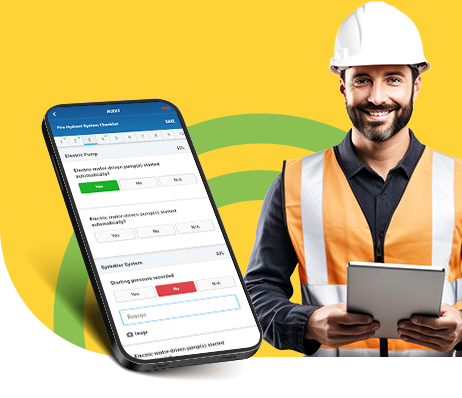
What is a Construction Site Inspection Checklist?
A Construction Site Inspection Checklist is a systematic tool used to evaluate safety practices, regulatory compliance, and overall site conditions. It includes a series of checkpoints designed to ensure that the construction site meets safety standards, equipment is in proper working condition, and all workers are protected from potential hazards. Regular site inspections are fundamental to preventing accidents, maintaining productivity, and fostering a culture of safety.
Key Areas to Inspect on the Construction Site:
- PPE: Verify that all workers wear appropriate PPE , including hard hats, safety glasses, gloves, and high-visibility vests.
- Scaffolding and Ladders: Inspect the stability and proper assembly of scaffolding and ladders used on the construction site.
- Fall Protection: Ensure that fall protection systems, such as harnesses and guardrails, are in place for work at heights.
- Electrical Safety: Check electrical systems, cords, and equipment for potential hazards and compliance with safety standards.
- Excavation Safety: Assess excavations for proper shoring, sloping, or shielding to prevent collapses.
- Heavy Equipment Operation: Verify that equipment operators are trained and qualified to operate machinery safely.
- Materials Handling: Ensure proper lifting techniques and equipment are used for material handling to prevent injuries.
- Housekeeping: Assess overall cleanliness and organization to prevent slips, trips, and falls.
Common Construction Site Hazards:
Failure to address construction site hazards can lead to:
- Falls from Heights: Inadequate fall protection can lead to severe injuries or fatalities.
- Electrical Accidents: Contact with live wires or faulty electrical equipment can cause electrocution.
- Struck-by Incidents: Workers may be struck by falling objects or moving construction equipment.
- Trenching and Excavation Hazards: Collapses can occur in improperly supported excavations.
- Material Handling Injuries: Improper lifting and handling of materials can cause musculoskeletal injuries.
Construction Site Inspection Best Practices:
- Frequent Inspections: Conduct regular construction site inspections to identify and address potential risks promptly.
- Training and Education: Provide comprehensive safety training to all construction personnel.
- Emergency Preparedness: Ensure that workers are aware of emergency procedures and know the location of emergency exits and equipment.
- Recordkeeping: Maintain detailed records of inspections, incidents, and corrective actions taken.
- Collaboration: Involve workers, supervisors, and project managers in the inspection process to enhance safety ownership.
Safetymint for your Construction Site Inspection:
Streamline your construction site inspections with Safetymint, our site inspection software. Safetymint simplifies the inspection process, making it easy to conduct and document site assessments efficiently. Our cloud-based platform ensures data security and stability, making it the ideal solution for all your inspection needs. Try Safetymint free for 14 days and elevate your construction site safety practices.
Sign up for the 14-day free trial
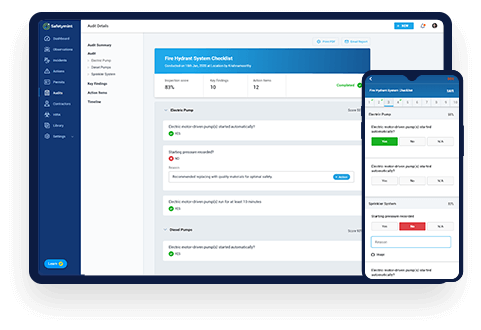
Disclaimer: The Construction Site Inspection Checklist provided by Safetymint is intended for general informational purposes only. Each construction site is unique, and specific inspection requirements may vary based on individual industry practices, regulations, and site conditions. Users of this template are encouraged to review and customize the checklist to align with their specific construction site environment, project needs, and safety protocols.
Related Checklists

GMP Audit Checklist

Pre-Startup Safety Review (PSSR) Checklist
Construction punch list checklist, project closeout checklist.
Daily Report Checklist


Safety Audit Checklist
The Complete Construction Site Inspection Checklist
Posted on October 7, 2019 |
Construction is a high risk and hazard industry that encompasses a broad spectrum of activities, including repair, remodeling, and commercial construction. Construction workers perform dangerous tasks, and they must be aware of electrocution, unguarded machinery, falling off rooftops, getting struck by heavy equipment, etc. Inspections provide certainty that everything in the construction project is working as it should, so we assembled a complete construction site inspection checklist so when the Inspectors come around, your job site passes with flying colors the first time around.
Table of Contents
Construction Site Inspection Checklist Article highlights:
— OSHA compliance evolves every year and companies must stay current
— Personal protection types and tips
— Surrounding Environments are ever-changing and preventative safety checks will save lives
— Equipment & Machinery – maintenance and safety checklists to keep employees safe and equipment costs low
A construction site inspection checklist is necessary for the preparation of a construction project to help avoid injuries, illnesses, and fatalities. Construction checklists are essential in the planning phase because they list processes and procedures that are mandatory standards. Inspections can put a hold on production if there is a need for reinspection, so Supervisors can use our checklist for efficiency and safety for all projects.
The checklist below is a resource of safety procedures that any company can follow, but always reconfirm your list before starting your next project:
What is OSHA?
OSHA , (Occupational Safety and Health Administration) is an organization under the United States Department of Labor, and it offers an extensive checklist for construction site safety in order to prevent potential hazards. According to OSHA, in 2017, one in five worker deaths last year occurred on construction developments. This organization identified the four most common reasons for construction fatalities to include electrical hazards, fall hazards, struck-by hazards, and caught-in or -between hazards. In this industry, there are formal inspections of job sites to ensure that companies are following OSHA standards.
OSHA checklists include:
— Crane safety — Electrical safety — Elevated surfaces — Eye and face protection — Floor and wall opening — Foot protection — Forklifts — Hand protection — Head protection — Hazard communication — Scaffolding
Personal Protection
As a Supervisor, it is important to supply and enforce that the team workers are wearing the proper protection on job sites. Appropriate attire and personal protection procedures and equipment are crucial in preventing hazards on the job site.
Eye Protection:
Safety glasses, goggles, or shields should be worn on all construction sites. Eye protection should be worn during all work production times for safety. When working with energized electrical systems, one should wear safety goggles or a face shield to avoid electrical hazards. One should also use eye protection when doing the following activities:
–welding
–cutting
–grinding
–nailing
–using chemicals/concrete
–around flying particles.
Head Protection:
In any instance where there is potential for objects to fall from above, workers must wear hard hats. Additionally, it is imperative to wear one on-site if there is accidental contact with electricity or one hits their head on a fixed object. Team members should routinely check the condition of hard hats and replace them if there is/are:
–dents or cracks –a heavy blow or electrical shock.
Foot Protection:
Every worker should be wearing safety-toed footwear on any site to prevent crushed toes if something falls on your feet or stubbing toes on heavy objects. Also, proper foot protection should be slip and puncture resistant. Before you go purchase foot protection, make sure you consult with your superior as there many different types of construction footwear that come with pros and cons.
Respiratory Protection:
In any field of construction, workers must wear the appropriate and task-specific P.P.E (Personal Protective Equipment) because on worksites there are a variety of fumes, industrial sprays, dust, and other respiratory hazards.
You will need to replace a new respirator if there are:
–cracks, tears or holes in the filter, –elasticity in straps, and deterioration of metal nose clips.
Additionally, check for loose-fitting lenses, excessive dirt, or broken/malfunctioning buckles so you can order new equipment or get them cleaned. To learn more about respiratory protection visit the OSHA website .
Surroundings
Scaffolding:
This step in the construction phase is extremely hazardous because scaffolding issues are a common cause of construction accidents. Bureau of Labor Statistics (BLS) stated that scaffolding results in “4,500 injuries and over 60 deaths each year and that almost 30 percent of all workplace deaths from falls involve scaffolding or ladders.”
Scaffold Problem Prevention :
–fully planked, on stable land –not moved within 10 feet of power lines –not altered –no added material for height –ideal weather conditions
Examining the scaffolding on the job site is something to check regularly; falls relate to lack and improper installation of guardrails and insufficient training.
Electrical safety:
Electrical workers can be at risk of awful burns, harmful shocks, and fatal electrocutions. OSHA stated that electrocution has the third-highest counted fatalities. To prevent the high numbers in electric shocks, teams should review:
–all electrical equipment and tools are maintained and regularly checked for defects –Any electrical cords, cables, and wires –electrical tools are grounded respectively unless they are double insulated. –Attire and prompt protocols when in contact with electrical energy. –Additionally, for any electrical equipment that is faulty or broken, they must be replaced promptly.
Elevated Surfaces:
Falls from construction sites are most common , reports the DCD. Almost one-third of all construction compensation claims are from elevated surface mishaps. Companies should double-check the following as it relates to elevated surfaces:
–signs are posted to show elevated surface capacity. –taller than 48 inches must have standardized guardrails –have handrails alongside the entry and exit –Harnesses are attached to secure anchorage
Trained operators should inspect Construction equipment every time they are transported and arrive to the job site. They should know what to look and listen for adequately working equipment. Equipment maintenance is a preventative measure for injuries on job sites and essential to safe operations. Common equipment and machinery are ladders, bulldozers, excavators, etc.
Operators should monitor:
–Fluid or hydraulic leaks –Loose belts, bolts, screws, fasteners –Faulty breaks and tire pressure –Broken or cracked windows/glass –Seatbelts –Back up alarms
Additionally, if a piece of equipment is inspected and identified as faulty, the machine should be sidelined for repair or replacement.
Self-Inspection is significant in the construction process because it identifies what needs to be addressed for improvement. When followed, hazards and conflicts during construction builds can be prevented. The number of employee injuries will significantly diminish if companies take the time and dedication to thoroughly self-inspect (and continually monitor) their equipment and job sites to identify potential hazards and problems.
Risk mitigation is the name of the game.
Marketing Department
Most Recent Articles
Subscribe to receive insights
The 9 best tips for construction site inspection checklists.

If you have an inspection process in place but are still finding too many defects on electrical equipment, your construction sites, potential fall hazards... it might be time to take a closer look at you r Construction Site Inspection Checklists . It’s not uncommon for checklists to lose relevance and to see benefits taper off over time.
This is because unless you continue to adapt your checklists to your current issues and concerns, they won’t be an effective defect prevention tool.
Construction Site Inspections - Improving your Checklists
Whether you are just getting started with creating a pre-construction site inspection checklist for your construction project or you want to improve your existing construction process, these tips will help you get closer to first-time quality.
Have Preparatory Meetings
Start with a basic site inspection checklist, discuss job-ready issues, discuss job-completion requirements, have subcontractors do self-inspections, use checklists during site walks, perform critical milestone inspections, wade in, don’t dive, use quality management software.

Before the beginning of each new phase of a construction project schedule, have meetings with each subcontractor that will be doing work. This is an opportunity to set expectations about quality, review the job specifications, and go through the checklists that you will be using to approve this work.
Discuss risks and concerns unique to the project and include them as routine inspection checkpoints. Adding issues unique to the job as specific checkpoints reinforces their importance and makes them required checks during the inspection process .
Bring a basic checklist to each meeting, whether it is one you have used before or a template from a library of inspection checklists . The template should include sections for:
- Checkpoints to heighten awareness of critical details
- Checkpoints to document compliance with project-specific requirements
- Recording of important measurements
- Scores for quality, safety, and timeliness
- Required pictures of inspected work
From this starting point, you can tailor your checklist to both the job and the subcontractors doing the work. Each sub trade should get its own set of checklists that focuses only on the work that crew is doing.
Many general contractors find that subcontractors are initially resistant to checklists and doing regular inspections themselves because they think it will add work or be a burden.
However, the reality is that checklists can actually help reduce pre-installation job-ready issues from previous subcontractors. One way to overcome an objection to using checklists is to start the conversation asking about job-ready issues or problems the subcontractor has experienced that prevented him from starting work.
Ask each subcontractor what they are most concerned about when starting a new phase. For example, the framing crew needs the foundation to be flat and properly dimensioned before they can start work.
Let the subcontractor know that their job-ready requirements will be added to the job-completion requirements for the subcontractor that comes before them. This sets the tone for a cooperative process in which everybody wins.
Talk to each subcontractor about what a well-executed job looks like.
Discuss the common punch-list items you have seen for this type of work and how best to avoid them. Add these to the checklist in the heightened-awareness section so the subcontractor keeps a close eye on these issues and ensures that they are addressed before the job is completed.
By focusing on known issues with their own work, subcontractors can concentrate their efforts on getting closer to first-time quality. Don’t forget to include the job-ready items for the next subcontractor in the job-completion requirements.
Once you have developed the checklists together, subcontractors can use them to perform their own construction site inspection with the input of the relevant construction workers and let you know when their work is complete.
Because the subcontractor is the first inspector, they can check items that will surely be inspected by others and avoid call-backs. This process can also be linked to pay points, providing additional incentive for them to check their own work and sign off on it when completed.
You’re already taking the time to walk the site on a regular basis. Adding a checklist process doesn’t add much time and can help you focus your attention on the heightened-awareness issues.
Having a checklist available for easy reference also allows you to identify potential problems before they arise so you can work with subcontractors to get back on track.
At certain critical points in a project (hold points), the work of multiple trades will need to be inspected and completion verified before the job can move forward. For example, you might need milestone inspections for:
- Dry-in and MEP (pre-drywall)
- Finishes for each unit
- Final project turnover
Ideally, these construction site inspections are performed by a QA person who will also ensure best practices are being followed (wearing hard hats, safety goggles...), but they can also be done by the site superintendent. Because a project can't move forward until all issues have been resolved at these hold points, it's critical to get as close to first-time quality as possible. Your individual subcontractor inspection checklists support this process and help keep your job on schedule.
If you’re just getting started with checklists, the process can feel overwhelming. How are you going to create a checklist for each subcontractor for every phase of work? The good news is, you don’t have to do it all in advance.
Add checklists as you go and work with your subcontractors to create them.
After you have done this once, you can use the existing checklists on future jobs and modify them as needed to improve your project and construction site safety. You can also ask subcontractors to create their own checklists and go from there.
Quality management software , such as FTQ360, is designed to help you get through the inspection process more efficiently and effectively. With built-in basic checklists that can be customized as needed, much of the work is already done for you.
For each subcontractor, you can quickly see which defects arise the most and can become potential hazards and add them to your heightened awareness list. You can also add notes and take pictures during the completion works handover inspection. All of this data is updated and communicated in real-time so you can make fast decisions and keep the project moving.
FTQ360 comes with 600 basic checklists that you can take to preparatory meetings and use as a starting point for conversations with subcontractors. If you want to give them a test drive, start your free trial today.
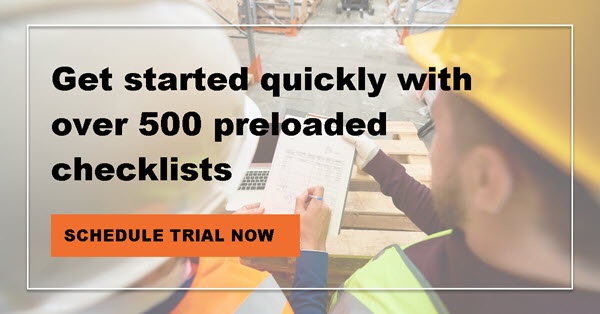
Related Articles
What is project productivity assurance and control (ppac) on construction projects.
Chaos on a construction jobsite is the opposite of productivity. It might appear as random events and feel like construction as...
Four Effective Measures Taken by Skilled Contractors to prevent Construction Defect Litigation
The threat of construction defect litigation looms large for every contractor. It can severely impact a contractor's...
Case Study: How a construction company reduced subcontractor errors
A construction company building office complexes in the Midwestern United States had a crippling problem. In their words, “the...
Privacy Policy
© 2019 FTQ360 Inc

Prior to carrying out your site analysis site visit you will have undertaken your site analysis desktop study . It is important you go to site prepared, so make sure you check out that blog post before you continue with this one.
The desktop study will establish some of the specific information you will be looking for, or what equipment you may need to take with you. With any site visit it is key that you take everything you need, and get as much information as you can – because often the site can be located a good distance from you, and it costs both time and money if you keep on having to take trips back to site because you were underprepared for your first visit.
You can download our Site Visit Site Analysis Checklist by clicking the button below. It makes your site visit a whole lot easier!
Scroll to the end to download this article as a handy PDF guide!
There are many things you will be looking for when you carry out your site visit, and in order to record some of this information you will need to take a few items with you that will make things a bit easier.
What to take with you on your Site Visit

- Site map or plan – preferably a couple of copies so you can scribble observations on them or mark out specific features etc.
- Camera – essential. Make sure you take pictures of everything. Also, make sure you get some shots of the site from a distance so you can use these in your final images, cgi’s and so on. Also take pictures of what is opposite the site, so you can use these as reflections in windows of your design. It is so frustrating when you go to the trouble of visiting a site and come back wishing you had taken more pictures. It is a good idea to take some pictures of relevant materials in and around the site.
- Smart phone. If you have any apps that assist with taking panoramic pictures, take a few of these too. You can do some interesting stuff when you get to later design stages if you have a few panoramics to play with.
- Note book. Really important to be able to jot down any observations.
- Tape measure. Some sites may be close to hazards or situations where you will need to measure the proximity. If you have one, a disto, or laser measure could also come in handy, but not essential. I use this disto .
- Good weather! If you have a choice of when to visit the site try to pick a day when there is a bit of blue sky around. It will look better for your site photos, particularly if you are planning on using them in future presentations. And, let’s be honest, no one likes to do a site visit in the rain!
In the following video I run through all of the main points to look for when carrying out a site analysis site visit. Be sure to check it out.
Let’s get this site analysis site visit started
Before you head to site, if you are travelling alone, make sure someone knows where you are going, and what time you expect to be back. Keep that person updated.
On arrival to site, make sure you check in with the relevant person if necessary. The site could be occupied or un-occupied so make sure any owners, managers etc are aware that you have arrived and that you will be studying the site and taking photographs.
I would start by having a quick walk around the site to familiarise yourself with it generally. Take notes on what you observe, how you feel about the site, important information that you may have established from your desktop study that needs to be identified.
Next go round the site taking photographs of everything. You can never take too many photos.
After this start taking notes of any observations and scribbling down annotations on your plans. Anything is relevant, its better to write down too much than not enough.
Take your time to really get to know the site. If possible spend a bit of time there so that you can absorb the surrounding environment as well.
What to look out for
Site and surroundings.
- Site location details (road names, address, major landmarks etc)
- Current context – existing buildings, car parking, roads.
- Access to site – vehicle access, pedestrian access etc

Download our site analysis symbols for photoshop!

Check out our Desktop Study Guide – what you need to do before your site visit.

Other recent posts…

Architecture Case Study
What is an Architecture Case Study? An architecture case study is a detailed analysis of a particular architectural project, design concept, or process. The goal is to examine and understand how a specific project was conceived, developed, and executed. This involves...

Ornament and Crime
Introduction ‘Ornament and Crime’ is a famous architectural manifesto by Austrian architect Adolf Loos (1870-1933). The phrase was initially the title of a lecture he gave in 1910 at the Akademischer Verband für Literatur und Musik (Academic Association for Literature...

Average Male and Female Dimensions and Heights
Introduction Updated July 2024 The average dimensions of the human body are essential in architectural design as they help to ensure comfort and enhance the user experience. These physical measurements, known as anthropometric data, are used by architects and...
Wow, what a useful article. There are so many things to take into consideration when doing a site visit and having them listed like this (with a checklist!) is very helpful. Thanks for a great post!
Thank you Ken 🙂
Hi Emma, thank you for your well done and insightful posts. I am not sure about the UK, but for anyone in the US I would be sure to go through the local zoning ordinances and, if your client is okay with it, reach out to the local planner. This is probably part of the desktop study, but if there are any overlay zones (e.g. historic, medical use) they should be in mind when visiting the site as well. Also, we would consider any evidence that might warrant an environmental assessment.
I appreciate your posts!
Superb informations that I found
am a retired Urban and Tourism Planner but still active in mentoring young planners, your post was really helpful and would recommend it to my students . thanks for a great job
Thank you 🙂
Submit a Comment Cancel reply
Your email address will not be published. Required fields are marked *
Submit Comment
This site uses Akismet to reduce spam. Learn how your comment data is processed .
This website uses cookies to improve your experience. We'll assume you're ok with this, but you can opt-out if you wish. Read More
- Nederlands ( Dutch )
- Français ( French )
- Deutsch ( German )
Construction site inspection: Why it’s important to your construction project and business
Written by LetsBuild
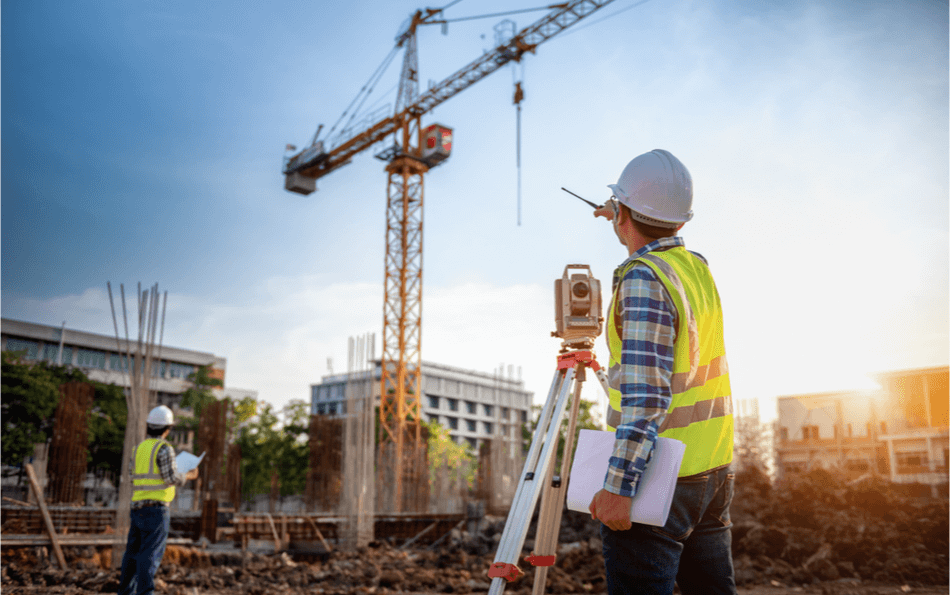
Share this story

Routine inspection is critical in each and every part of your construction project. Inspections guarantee that works within a project go forward as planned and are according to requirements, standards and regulations. Running a construction site requires the coordination of people, materials and equipment hence, construction inspections are executed for a great number of purposes in every construction phase and throughout the entire project duration to ensure that things are progressing smoothly.
Construction inspections are usually carried out as a contractual responsibility performed by the contractors to provide the client or a third party an independent view of the construction works and their progress. The usual construction inspections include the following activities:
- Inspection of the construction process to make sure that all materials and procedures comply with the plan and specifications
- Inspection and documentation of all contractor activities
- Reporting of daily on-site inspections
- Detailed inspections of the quality of installations if they comply to standards and specifications
- Scrutinising drawings and specifications and discussing deviations and non-conformities
- Keeping and maintaining inspection checklists and records in a complete, accurate, and orderly manner
- Participation in project meetings
- Monitoring the contractor’s schedule
- Inspections of paints and coatings
- Field testing and materials sampling of soils, concrete and asphalt, etc.
- Review and completion of change order/s
- Monitoring and documenting materials delivered and used in the construction works
- Performing semi-final and final inspections upon building completion
- Preparation of punch list/s and monitoring of completion works
- Handover inspection for smooth project close-out
Table of Contents
Discover LB Aprolan: the ultimate app for your construction site inspections
Most inspections are usually conducted but not limited during the construction phase. But before you can inspect and start reporting on a project’s progress, specific inspections are carried out as part of the general contract administration process . These inspections may be part of the contract review and contract signing, pre-contract meetings and client onboarding.
Construction site inspectors may either be the project manager, a member of the contractors’ existing team or an entirely different consultant. Depending on the size of the project, site inspection may have to be carried out by a team with specific inspectors per different department of the project. Design consultants also play a role in periodic inspections. For specific aspects of a project, specialist inspectors may be required to perform inspections on environmental policy, waste management on site, accessibility, etc.
Since site inspectors furnish the contract manager or project manager with independent evaluation of construction works and their progress, site inspectors usually keep daily construction logs or a site diary , front construction progress meetings, and create and submit regular reports.
Quality control (QC) inspections involve those that ensure that the construction works comply with requirements. For construction quality, there are technical specifications that describe what controls must be carried out to guarantee that construction works are carried out satisfactorily.
These controls are not only for the products and materials, but also include the execution and completion of the construction works. Inspections are a way to control the quality of a finished construction work. The desired outcome is to refine the product or work before being presented to the client such that those that do not comply with requirements are fixed.
Your goal is to reduce the costs of poor quality and that the deliverable project complies with all of the client’s requirements whether you’re implementing internal or external controls, or even both.
The international standards applied to construction is the ISO 9000 family of standards which includes technical guides, reports and specifications related to the efficiency of a construction organisation’s quality management system. Basically, the principles that determine the quality management in construction standards are: scope of the construction project, the budget of the project and the schedule for completion. In the EU, the Directive 89/196/EEC or the CPD (the Construction Products Directive) that is being primarily followed for the standardisation of construction works, processes and systems. Specific inspections may be formulated to cater and qualify compliance to requirements associated with this directive.
Construction inspections related to quality may include checks for materials, work units, processes and services designed and planned by the construction company in order to comply with the contract’s quality requirements. For preventative strategies, an inspection scheme is also aligned with the quality plan for the construction works requiring guarantee in construction quality. Inspections may also be carried out around documentation, work instructions, action plans, etc. for the execution and control of construction processes. These quality control inspections may also be replaced with certifications by third parties.
Free eBook: Guide to a digitised QHSE organisation
Health and safety.
Construction inspections are also important to make sure that health and safety, the Construction (Design and Management) (in the UK), and the European Agency for Safety and Health at Work regulations and standards are being complied with and followed.
These inspections can be internally conducted by the contractor, or externally by the regulating body, or by third party audits. The health and safety inspections needed to be conducted in the construction site is a specific list and should be conducted exhaustively as per required:
- Prevention of falls and personal fall protection systems
- Work at height
- Work platforms such as scaffold and mobile platforms
- Ladders and stepladders
- Personal protection equipment (PPE), including head protection
- Plant, vehicles and other equipment
- Electrical systems
- Asbestos risk
- Provision of welfare facilities such as toilets and handwashing facilities
- Site conditions and order
- Avoidance of obstructions
- Management of respiratory risks
- Structural stability
- Prevention of unauthorised access to the site
The timing of inspections should be scheduled as to frequency and accompanied with correct reports and actionable items.
Building control
In Europe, it is the Consortium of European Building Control that develops appropriate legislation and standards associated with health, safety, accessibility, energy conservation and sustainability of the built environment and includes professional organisations, government bodies or a comparable agency.
These building control inspections are usually executed by a building control local authority or by an approved third-party inspector. Building control inspections are generally required in the following key stages of a project :
- Commencement
- Excavation (before excavations are filled)
- Foundations (before they are covered up)
- Laying of damp proof courses
- New drains installation (before covering up)
- Construction of the primary structure
- Installation of insulation
- Roof construction
Other Inspections
There are other construction inspections not included in the categories above, which include:
- Planning inspections to substantiate compliance with planning permissions, conditions and obligations
- Inspections for release of funding by applicable agencies
- Insurance inspections
- Routine inspections of street works by highway authorities for road and sewer construction types
- Environmental inspections related to pollution (noise, water, smoke, etc.) and installations like kitchens and drains
- Fire safety inspection for fire escapes, protection systems, hazards and storage of certain materials
- Factory inspections
- Aracheological inspection of excavations
Some construction inspection guidelines
As mentioned, the main quality measures of a construction project are the project scope, the budget and the time for completion. Always go back to these three main points when you’re planning an inspection.
Project scope
The defined scope of the construction project should be leading the inspection processes at all times wherein the client’s needs are the main focus of the scope. All construction inspection checklists and all construction reports must always have the client’s details with thorough notes of communication history between the client and your construction staff.
Every little thing adjusted or installed must be authorised by your client. Communication with the client is the top priority of any of your construction project checklists. Use construction inspections to make sure everything is going according to the project scope.
All of your construction inspection checklists that deal with money must always reference the project budget. Completing a project within budget is another priority as a contractor or project manager, which greatly reflects the quality of your work.
Make sure to have inspections that would ensure the coordination of your suppliers, the purchasing of materials, labor activities and payouts, etc. Make use of your construction inspections wisely to monitor that every spending falls within the budget as you progress from one phase to the next even until completion.
Your construction project schedule directly affects your client’s budget and needs, which can turn a satisfied client into a dissatisfied one bringing some costly litigation to the table. Utilise construction inspections to monitor your project schedule on a daily, weekly and monthly basis.
Always update all relevant stakeholders of any kind of delay including their details. Delays in construction can cost a lot; always keep to the clearly defined project schedule at the start of all construction activities.
Construction errors and change orders
Human error and change orders are inevitable in construction projects. The importance of construction inspection lies in a good inspection system that deals with errors and necessary changes. Having a good inspection system centred around the connectedness of your project teams will help you with the success of your construction project and its on-time delivery.
- construction inspection
Hand-picked related articles
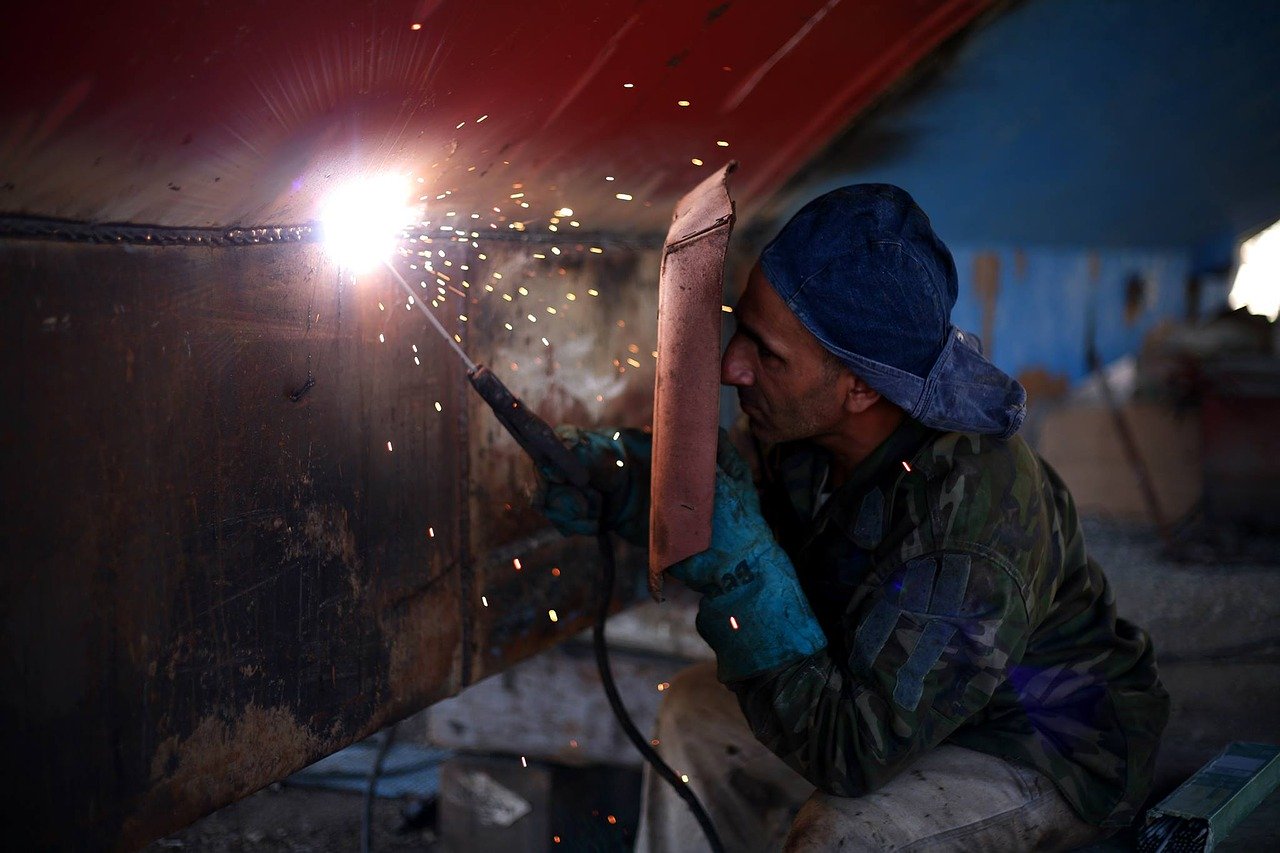

A site inspection checklist is a tool event planners can use when visiting a location they’re considering for their next affair.
Examining a venue in person allows you to make note of the advantages and limitations of what’s available. Having a checklist makes it easy to keep track of all the little details. This way, you can make an educated decision either way. It also helps to have this info handy when you begin planning the event.
Get every detail right at any site with accurate diagrams
Get Started Free
A site inspection checklist helps event planners remember every little detail, no matter how small, when visiting a venue. It also helps to keep uniform records of site inspections as a future reference for both yourself and other team members.
Organized and extremely detailed records like these are a huge asset to event planners, regardless of whether they ultimately choose the venue this time around.
In an ideal world, you’d schedule your site inspection a year out from your event, with follow-up visits six months and one month out.
But the new norm seems to be a single visit just a few months away from the event. Not to worry though ” a site inspection checklist is a great tool for this situation since it helps to make sure you get all your ducks in a row in just one visit.
A site inspection checklist helps event planners remember every detail, no matter how small, when visiting a venue. Click To Tweet
2. Scheduling
Event planners can typically schedule a site inspection through a sales representative at the property via phone or email. If it’s a hotel, they might also coordinate your complimentary room at this stage, although not all sites offer free rooms with every inspection.
3. Preparation
Conducting a site visit requires time management skills from both the planner and the venue itself. Make sure you’re prepared with your site visit checklist and preliminary research completed before you arrive. And if the visit feels rushed, make a note of that as well.

3 site inspection tips
- Ask smart questions. Ask questions that can’t be answered by any materials you already have. Also, remember to time your questions well. Some questions are better to ask during a tour, while others are more suited to ask during a break.
- Connect with at least three other event planners. Most often, a site visit will involve a group of people. Talk to as many event planners as you can and exchange contact info. After the inspection, you can connect and discuss your points of view about the venue and whether you’ll each move forward with it. They might even have some insider info to pass along.
- Have a checklist ready to go. As we’ve already mentioned, having a checklist with you is one of the most important steps to a successful site inspection. Use our checklist as a jumping-off point and be sure to include additional questions of your own.
Try the world’s most popular event diagramming
In addition to bringing a checklist like the one below, you’ll also need to do each of the following:
- Research, research, research. Look at specifics about the venue and the surrounding area. Review all resources (like virtual tours and downloadable floor plans) the venue provides ahead of time.
- Check in with your team . Go over your inspection checklist to see if they have any further recommendations or requests for you.
- Prepare business cards . You can give them to the venue’s sales rep and other tour members for networking purposes.
- Pack the right tools. You should always bring a camera (that has plenty of available storage) with at least one backup battery just in case. Also, remember to take your checklist and an organized list of your event needs and wants.
- Know what you need to see and what you don’t need to see. If the gym and pool areas aren’t necessary for your guests, make sure your contact at the venue knows that ahead of time. Be sure to have a must see list and kindly insist on visiting these areas during the visit.
Remember, the point of the site inspection is to leave with all the info you need to make a decision about the venue. So prepare accordingly. In addition to this list, you can also prepare by getting to know what separates a good inspection from a bad one.

Hotels and other event venues should do their best to impress event planners during site inspections. But there are some telltale signs that a venue is going truly above and beyond (or not).
Here are some signs that the site knows how to lead a quality site inspection:
- They are honest about hidden costs or availability. The sales rep should tell you about pricing options and fees upfront.
- They ask for event specifics before you arrive . Venue reps should already be familiar with your event needs and how they can accommodate them ” even if they have to get a little creative to do so.
- They provide full access to updated and accurate floor plans . To-scale floor plans are a must for event planners, and venues should go out of their way to make sure you have them so you can successfully plan table layouts .
- They don’t overpromise. If the venue isn’t able to fulfill things like food and beverage requests or equipment availability, they should be transparent about that. They should also provide all the possible alternatives they have on hand.
- They provide a custom, tailored experience for your visit. Their site inspection agenda, room set-ups, and walk-throughs should all mirror your event vision.
- They give you a single point of contact. Having one team member you can contact before, during, and after the site visit makes it easier to communicate with the venue.
Once you know these telltale signs, it’s time to prepare your own checklist.
Bring your checklist to life faster with easy diagramming
Get Started Now
- Site inspection date
- Contact information
- Venue availability
Site specifics
- Mobil rating
- Is there any upcoming construction planned? If so, when?
- Is the venue ADA compliant? If no, why not?
- Cancelation policy
- Attrition penalty
- Deposit amount and due date
- Neighborhood
- Building appearance
- Landscaping
Event logistics
- Nearest airport & distance from venue
- Nearest hotel (if venue is not a hotel) & distance from venue
- Parking fees
- Valet parking availability
- Freeway accessibility
- Directional signage
- Recreational services available
Food & beverage
- Continental breakfast
- Full breakfast
- Coffee (per gallon)
- Service charge
- Guarantees needed by
- Overset guarantee by (%)
- Special packages
- Presentation
Audio & visual
- Equipment provided
- Equipment quality
- Equipment availability
- Rental rates
- Labor rates
- Are union rules applicable? If so, what are the requirements?
Additional checklist items for meeting rooms
- Space availability
- Room rental charge
- Set-up charges
- Cleanliness
- Soundproofing
- Ceiling height
- Temperature control
- Sound system
- Presentation equipment
- Number of elevators and proximity to space
- Nearest restroom proximity
- Nearest restroom cleanliness
- Catering availability
Additional checklist items for hotels
- Is complimentary transportation to/from the nearest hotel and/or airport available?
- Approximate taxi fare from the nearest hotel and/or airport
- Total number of sleeping rooms
- Total number of suites
- Rooms with king beds
- Rooms with queen beds
- Rooms with 2 double beds
- Rooms with twin beds
- % non-smoking rooms
- Rack rate for singles, doubles, and suites
- Group rate for singles, doubles, and suites
- Complimentary rooms available
- Plus over and above
- Room tax rate
- Additional tax per room per night, if applicable
- Room block by day (list each date and corresponding number of rooms)
- Cut off date
- Are rates available after cut off date?
- Proximity to meeting space
- Cleanliness & appearance
- Square footage of each room type
- General amenities
- Bathroom conditions & cleanliness
- Is there a workspace or desk available inside rooms?
- Is there a sitting area available inside rooms?
- Number of restaurants in hotel
- Number of lounges in hotel
- Public restroom proximity
- Public restroom cleanliness
- Fire safety
- Handicap accessibility

5 important questions to ask at every site inspection
There are certain questions that, regardless of what type of venue you visit, are required for any event. Here are 5 questions that should give you greater insight into what the site can provide:
- How late can events run?
- What is the max capacity for each room?
- What permits are required for events?
- Are there designated areas for storage, green rooms, and/or back-of-house?
- What branding opportunities are available inside and outside of the venue?
If you want to make the most of your site visit, you must also think ahead to what you’ll need to do once it’s over. Make sure to address each of the following:
- Review your visit with key stakeholders by forwarding them a summary of your findings along with a meeting request.
- Hold an in-person meeting to go over details, share your site inspection checklist, and answer any questions your team might have.
- Make a decision on whether or not to move forward on this venue together.
You can find even more amazing tips for site inspections and event planning with our free event planning checklist .

Final thoughts
Checking out a new venue for the first time means managing a lot of moving parts with a site inspection checklist. It also means trusting your gut and picking a venue that aligns with your event goals. Knowledge is power for the modern event planner. So be sure to include any other questions you may have that are specific to your event or your location needs. Now that you’ve read the site visit guide , check out tips for how to negotiate event contracts.
Bring amazing events to life, no stress
- Free Planner Tools
- Event Seating Software
- Event Check-In Software
Venue Tools
- Event Diagramming Software
- Interactive Floor Plans
- Photo-Realistic 3D
- Lead Capture Tools
- Event Planning
- Guides & Webinars
- Customer Stories
- Contact Sales: +1 (877) 973-2863
- About Cvent
- Cvent Community
- Help & Support
- Training & Certification
- Status & Uptime
- Terms of Service
- Privacy Policy
- Your Privacy Choices
- +1 (877) 973-2863 - Option 1
- [email protected]

Copyright 2024 Cvent Inc. All rights reserved.
Use and edit template for free
Construction site visit report template and example: better than pdf, word & excel.
Start with a free 30-day trial. No credit card required.
Ensure you're properly documenting your construction site visits to review the conditions of the site, status of the project and team performance so your project is progressing on time, on scope and you're meeting your compliance requirements.
Use this standardised construction site visit report template to run well-documented reports digitally from on site via mobile or tablet with much more functionality than using Word or Excel to run site visits.
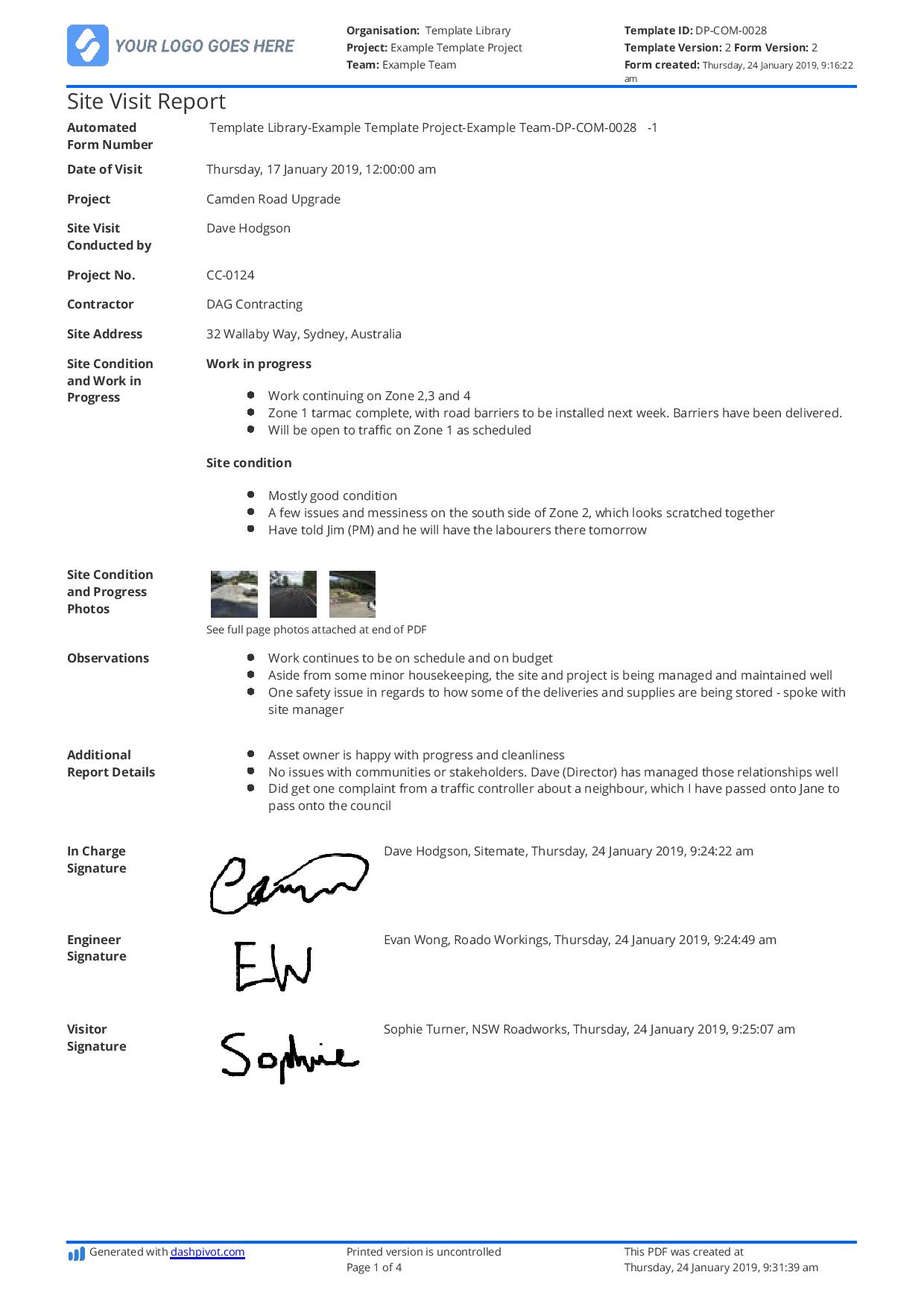
Trusted by over 250,000 people from built-world companies of all sizes
~200 employees
~20 employees
~25,000 employees
~40 employees
~10,000 employees
~1,500 employees
~35,000 employees
How does this digital construction site visit report template compare to using a static PDF, Excel or Word doc?
Preview this site visit report template below. Try the interactive demo.
Use this construction site visit report template for free.
This site visit report template was generated with dashpivot.
Digitise your construction site visit reports to make it easier to run, update or access them on site to build better processes rather than using Excel Sheets or a Word Doc.
- Record new site visits or access and update existing site visit reports via mobile or tablet, then sync back up to the office as soon as they're submitted.
- Share site visit reports as perfectly formatted PDF or CSV with brand colours and company logo.
- Attach photos or videos of the site condition and use photo markup to highlight defects, hazards or work completed.
- Get digital signoff from Supervisors, Engineers, Visitors and more with eSignatures.
- Customise the digital template with any fields you need to capture the site condition or project progress.
Other popular templates you can use and customise for free

Construction Log Book template
Make your log book easier to complete, share and organise with this digital log book template.
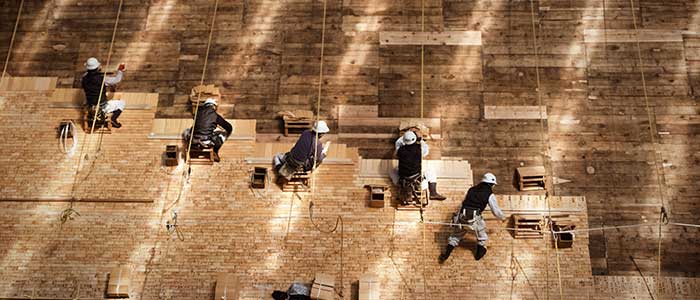
Construction Work Order template
This construction work order template can be used and adapted for any work order, to make your communications more efficient and more reliable.
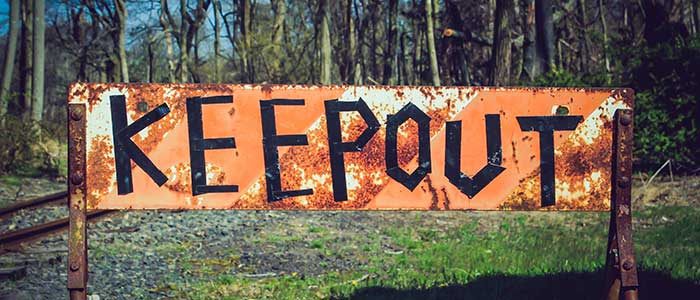
Construction Stop Work Order template
This construction stop work order template ensures your stop work orders never get missed or ignored.
Construction site visit reports are crucial for visibility on site condition and project progress
A well-detailed construction site visit report is essential for ensuring project success and safety. It gives stakeholders a comprehensive overview of site conditions, progress, and compliance, ensuring informed decision-making on if the project or contract need changes.
By identifying hazards, recommending controls, and serving as a digital audit trail, site visit reports play a vital role in risk management, promoting transparency, accountability, and quality in the construction process.
Whether your site visit report is in Word, Excel or you're using this digital contruction site visit report template, you need to include:
- Date of Visit
- Site Details
- Site Condition & Work in Progress
- Photos of site and hazards
- Issues found and how to resolve
Share your construction site report as a PDF so external stakeholders have easy access to it when they need to review it.
Sitemate builds best-in-class software tools for built world companies.

Family Owned and Locally Operated Since 1989
Father and Son Inspection Team
Standard Home Inspections, 4 Point Insurance Inspections, Wind Mitigation Inspections, and more

Home Inspections in St. Petersburg & all of Tampa Bay

Call OSI before you buy! We are here to inspect your residential and commercial real estate property.
OSI Inspection Services has been providing Home Inspections, 4 Point Insurance Inspections, Wind Mitigation Inspections, Commercial Property Inspections, and more in St. Petersburg, FL and the Greater Tampa Bay area since 1989. You can feel confident in OSI when you know that your home inspection will be conducted by a State Licensed Home Inspector, Building Inspector, and Building Contractor with decades of construction experience.
This distinction is critical when performing your due diligence on home inspection companies, as there is NO apprenticeship requirement for home inspectors in the State of Florida, leading many to pursue the trade without any firsthand experience in the industry. Having been in the industry for decades, Brian has been able to pass on his extensive knowledge in the field to his son Payton whom he has worked alongside with for over 7 years now (and who is also individually licensed as a Home Inspector in the State of Florida).
Helping you Save Money
Whether we can provide information about needed repairs to a property before you buy, lowering your current homeowner's insurance premium with a Wind Mitigation Inspection, or helping you obtain homeowners insurance by performing a 4 Point Inspection, OSI is in the business of educating our clients.
A home inspection is a limited, non-invasive visual examination of the condition of a home before a sale or purchase. This can also be bundled with a 4 Point Insurance Inspection as well as a Wind Mitigation Inspection.
A Four Point Insurance Inspection is a property examination reviewing four major systems: Roofing, Electrical, Plumbing and HVAC. This is typically needed for homeowners insurance underwriting purposes.

A Wind Mitigation Inspection verifies the structural and nonstructural features that prevent or lessen the damage caused by extreme winds and can lower your homeowners insurance premiums.

A Commercial Building Inspection is a comprehensive evaluation of the condition and all major components of a commercial building.
This can include having a 4 Point Insurance Inspection performed.

Pre-Listing Inspections focus on identifying deficiencies for a seller before listing their home on the market. This can help streamline the selling process for the homeowner by having corrected the issues identified by OSI prior to listing.
This can also include having a Four Point Insurance Inspection performed.

Typically requested by a client during various stages of their newly constructed home to ensure building standards are being met. This may also be carried out before the client releases funds for the next stage of construction.

A Pre-Delivery Inspection / Punch Out Inspection is an option the buyer has to inspect newly constructed property before closing.
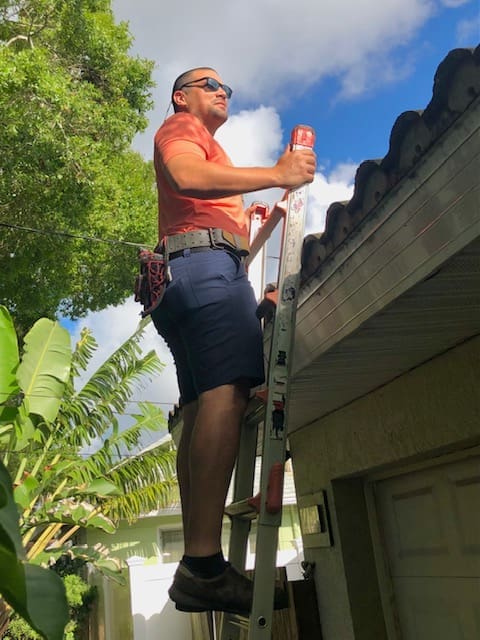
Home Inspection Testimonials

Brian and Peyton were absolutely wonderful to work with in regards to a recent home inspection we had them complete. They were so detailed and really took the time to go through the entire home. The home was an investment property and we knew it had a lot of concerns - their report was very thorough and shed light on issues that we were not aware of. Their photos and comments allowed us to make the decision to walk away from that home and saved us thousands out of pocket on hidden issues. We are under contract on another property and have already scheduled OSI for that house.
Brian and Payton were extremely detailed in our inspection from top to bottom, we had/have no concerns about any surprises coming our way as first time home buyers. They were very knowledgeable and professional throughout the whole process. The written report was just as organized and easy to understand as they were in person, making sure we had all our questions answered clearly. They were very transparent and gave great advice on which repairs were most important to focus on first. We were very impressed and appreciative of them, and will be recommending them to all our friends and family!
Taylor I can’t imagine how anyone could choose a better inspector than OSI. Brian is a third generation contractor with an eye for detail & exceptional understanding of the issues that come up for homeowners. He & his son Peyton went over every inch of our property & picked up things we never even thought about. I highly recommend them for their experience, thoughtfulness & expertise.
Our realtor recently referred us to OSI prior to our making a final decision on a new home. This was to be the third new home we have purchased over the years. We were truly amazed by the detailed report we received, as we have never had such a thorough inspection. Brian provided immediate results with photos, followed by a written report detailing both what could potentially be problem areas as well as small but correctible imperfections. These could easily have been overlooked by someone not as meticulous. To be honest, we were unsure at first about having this Inspection when we originally learned the cost. In retrospect, it was well worth it to have someone as meticulous as Brian Cesare perform this service and obvious that this family business takes great pride in their work. They live up to the descriptive words on their business card... “Knowledge Integrity Professional”
I've had OSI handle a few inspections for me as well as relatives and they always do such a great job. I had them do a wind mitigation inspection at my old house and I ended up getting more than $1000 back from my insurance company as I'd already paid my premium for the year with no credits (and had for years!). When I bought my new house Brian and Payton went over the place thoroughly and then met with me and my husband and explained everything and emailed a ton of pictures. They let me know what was material and what wasn't. The insurance inspections were included too. They are a family business and really take pride in their work.
We are in contract to buy a home in the St.Pete area. Brian and Payton were very thorough while inspecting the home. They made sure I understood what issues the home had as well as answered all my questions along the way. I highly recommend them if you’re in the need of a home inspection. Also, Dawn back at their office made sure the scheduling process was handled quickly due to closing time restraints. Everyone was friendly and helpful.
They are very thorough and meticulous during their inspection. On top on this, they are very cordial as they go about their work. Once the inspection has been completed,they take the time to go over their findings and answer any questions you might have. Lastly, the final report is sent to you for your files in a very timely manner. Excellent, excellent service!
My husband and I have used OSI Inspection Services twice and it has been a pleasure each time! The guys are beyond thorough and make sure to inspection every inch of your home. They take the time to explain to you all the potential issues and answer any questions. They are very professional and got the reports back to us quickly. Highly recommend them!!
I wanted to take a few minutes to let you know how much we saved on our insurance premiums after having the wind mitigation inspection done. Before the inspection, our premiums were going to be $2532.32 for the year. And now they are $1760.49 for the year. A savings of $771.83. Thank you so much!!
Wind Mitigation Testimonials
Just today, we got the revised insurance statement from St. Johns... and thanks to your report, we were discounted $1569 this year for Wind Mitigation!!! Thanks so very much, Brian. Best of success, and we'll both keep spreading the good word!
We just wanted to let you know that we got our new home owner's insurance policy, and your wind mitigation report will be saving us over $1700 per year on our insurance. We are very happy.
I just wanted to let you know that Nationwide gave us a very small credit on this year's contract, taking into consideration only the mitigation date until the end of the contract (beginning of June). However, it saved us $1500 on the renewal of our policy for the coming year.
In mid-December 2008, I was listening to 970FLA in the am, you know Jack & Tedd. Well, I hear Dawn from OSI talking about the Wind Mitigation Inspections and the rebates and reductions folks were getting back from their insurance companies. So I called. She took a lot of time explaining how it works, why it works, and the next step. So Brian came to our house on 29th, did the inspection, took an hour, filled out the paperwork, and submitted it to State Farm. Within two weeks, State Farm calls me and notifies me that a check for $846 is on the way for my prorated rebated and that my annual premium will be reduced by almost $1400.00 annually. Now my house is about 3100 sq ft and is probably worth 550K. I was paying close to 4K per in insurance premiums, with a 5K deductible. Wow! My wife was ecstatic, and when she was happy, everything in life just seemed better. Thanks, OSI
I would like to thank you for the huge savings I received on my insurance premium on my home located in the Foxwood Community in Trinity, FL. My wife Wendy and I just received our statement from our insurance company and were shocked that our savings was $978.00 due to the Wind Mitigation Inspection you did just a few weeks ago. Thank you again for your professionalism and advice on getting this inspection done.
Latest News


IMAGES
COMMENTS
How to write a site visit report for construction
A site visit is a meeting or inspection of a building site by an engineer, architect, or other consultant. The purpose of the site visit is to verify that the construction is progressing according to plan and to assess any risks, including potential hazards and safety issues. A site visit usually involves:
Download and use our Free Site Inspection Checklist Template. 2. Safety Inspection: Protecting Lives and Limbs. Safety should always be the top priority on any construction site. Your checklist must include items related to personal protective equipment (PPE), electrical equipment safety, and hazard identification.
Contractor's Guide to Jobsite Inspections
A Guide to Construction Site Inspection And Why It Matters
A site plan, also called a plot plan, is a drawing made by the architect, urban planner or engineer that illustrates the existing and proposed conditions for the construction site. These conditions can include buildings, roads, sidewalks, parking, drainage, sewer and water lines, lighting and landscaping.
Construction Site Inspections: A Guide for Contractors & ...
A Construction Site Inspection Checklist is a systematic tool used to evaluate safety practices, regulatory compliance, and overall site conditions. It includes a series of checkpoints designed to ensure that the construction site meets safety standards, equipment is in proper working condition, and all workers are protected from potential hazards.
1. The Purpose and Goal of Construction Site Inspection. To safeguard the well-being of all involved and to guarantee the project's adherence to industry standards. These inspections are crucial in detecting potential hazards, ensuring structural integrity, and verifying compliance with local building codes and regulations.
A construction site inspection checklist is necessary for the preparation of a construction project to help avoid injuries, illnesses, and fatalities. Construction checklists are essential in the planning phase because they list processes and procedures that are mandatory standards. Inspections can put a hold on production if there is a need ...
see an example of a good site visit report
Ultimate Site Inspection Checklist Guide - Magpi
The 9 Best Tips for Construction Site Inspection Checklists - Blog
Site Analysis Site Visit Guide and Checklist
Discover LB Aprolan: the ultimate app for your construction site inspections Progress. Most inspections are usually conducted but not limited during the construction phase. But before you can inspect and start reporting on a project's progress, specific inspections are carried out as part of the general contract administration process. These ...
A site inspection checklist helps event planners remember every little detail, no matter how small, when visiting a venue. It also helps to keep uniform records of site inspections as a future reference for both yourself and other team members. Organized and extremely detailed records like these are a huge asset to event planners, regardless of ...
Modern technology has made it far more efficient to capture, organise and track your site inspection checklists. In addition to speed, Site inspection software is also bringing new clarity and insight to site inspections by aggregating and processing all that checklist information quickly. These new efficiencies start at the source of the document.
Free to use for up to 10 users. Start using template View template in library. A site inspection report template is used to observe and record site hazards and assign corrective actions immediately while conducting your inspection. This template can be used by safety auditors to perform the following: 1. Add a safety hazards observed;
Building & Permitting - City of St. Petersburg
Applications & Forms - Building Permits
Construction Site Visit Report Template and Example
OSI Inspection Services has been providing Home Inspections, 4 Point Insurance Inspections, Wind Mitigation Inspections, Commercial Property Inspections, and more in St. Petersburg, FL and the Greater Tampa Bay area since 1989. You can feel confident in OSI when you know that your home inspection will be conducted by a State Licensed Home ...
St. Petersburg ... Inspections